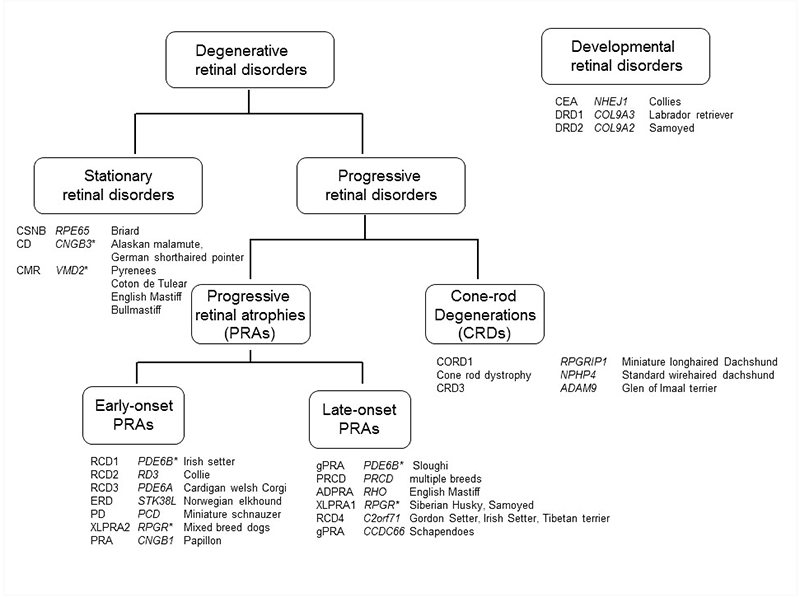This review summarises the mutations that have been associated with inherited eye disorders in the dog.
The genetics of eye disorders in the dog
Cathryn S. Mellersh
Canine Genetics and Epidemiology 2014, 1:3 doi:10.1186/2052-6687-1-3
 Donate
DonateDid you find our content interesting or helpful? Help support the IPFD enhance health, well-being and welfare for dogs everywhere.
This review summarises the mutations that have been associated with inherited eye disorders in the dog.
The genetics of eye disorders in the dog
Cathryn S. Mellersh
Canine Genetics and Epidemiology 2014, 1:3 doi:10.1186/2052-6687-1-3
The genetics of eye disorders in the dog
Lay summary
"Inherited forms of eye disease are arguably the best described and best characterized of all inherited diseases in the dog, at both the clinical and molecular level and at the time of writing 29 different mutations have been documented in the scientific literature that are associated with an inherited ocular disorder in the dog. The dog has already played an important role in the identification of genes that are important for ocular development and function as well as emerging therapies for inherited blindness in humans. Similarities in disease phenotype and eye structure and function between dog and man, together with the increasingly sophisticated genetic tools that are available for the dog, mean that the dog is likely to play an ever increasing role in both our understanding of the normal functioning of the eye and in our ability to treat inherited eye disorders. This review summarises the mutations that have been associated with inherited eye disorders in the dog."

"At the time of writing 29 different mutations have been associated with inherited eye disease in the domestic dog, and more are likely to have been identified by the time this review goes to press. This number far exceeds those associated with any other category of disease, meaning that inherited eye diseases are arguably better understood, at both the clinical and genetic level, than any other category of canine disease. The dog has already played an important role in emerging therapies for inherited blindness in humans and similarities in disease phenotype and eye structure and function between dog and man, together with the increasingly sophisticated genetic tools that are available for the dog, mean that the dog is likely to play an ever increasing role in both our understanding of the normal functioning of the eye and in our ability to treat inherited eye disorders."
Edited by Ann Milligan
By using this site, you agree to our Terms of Use.
Recommended Comments
Join the conversation
You can post now and register later. If you have an account, sign in now to post with your account.
Note: Your post will require moderator approval before it will be visible.